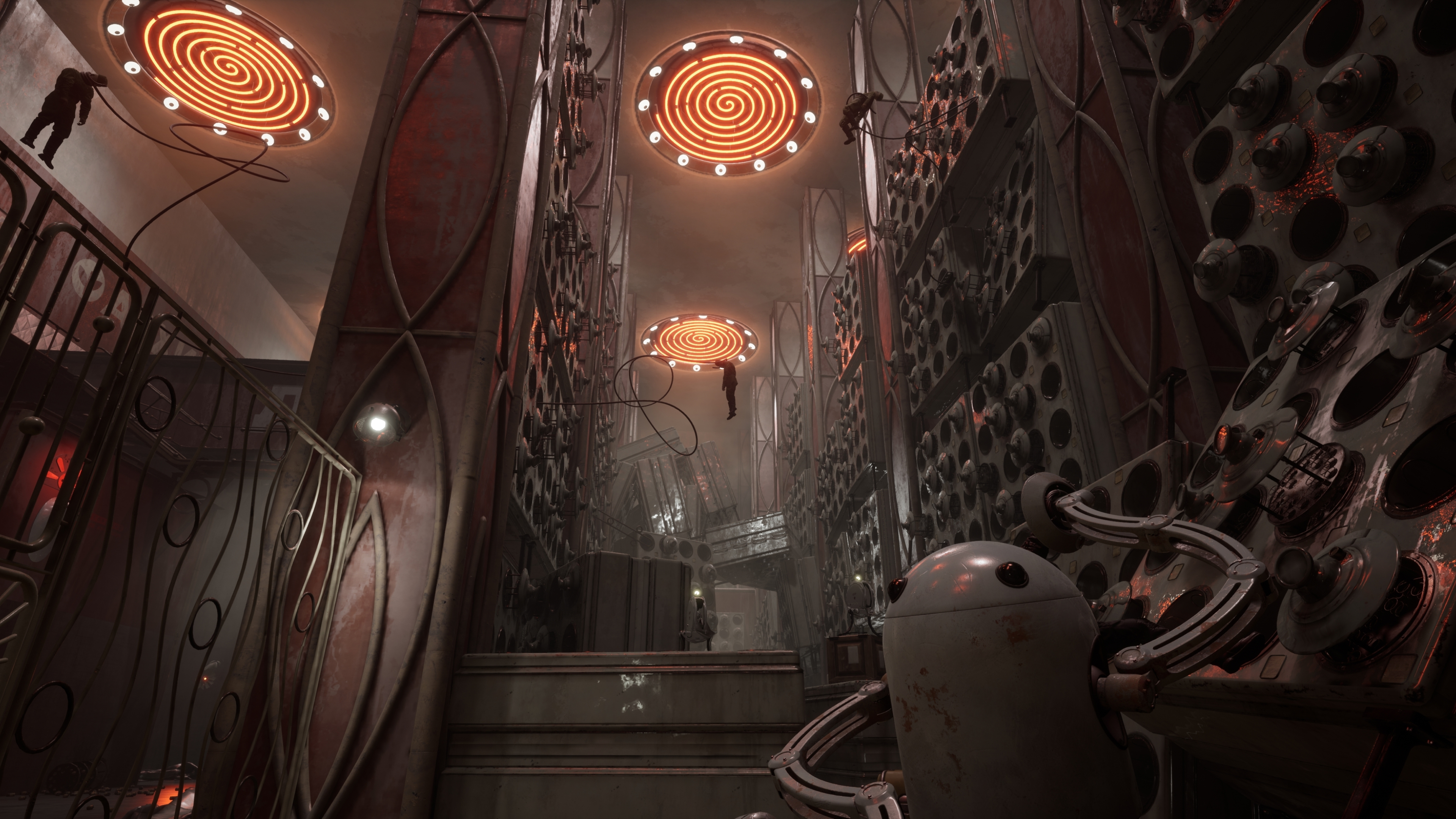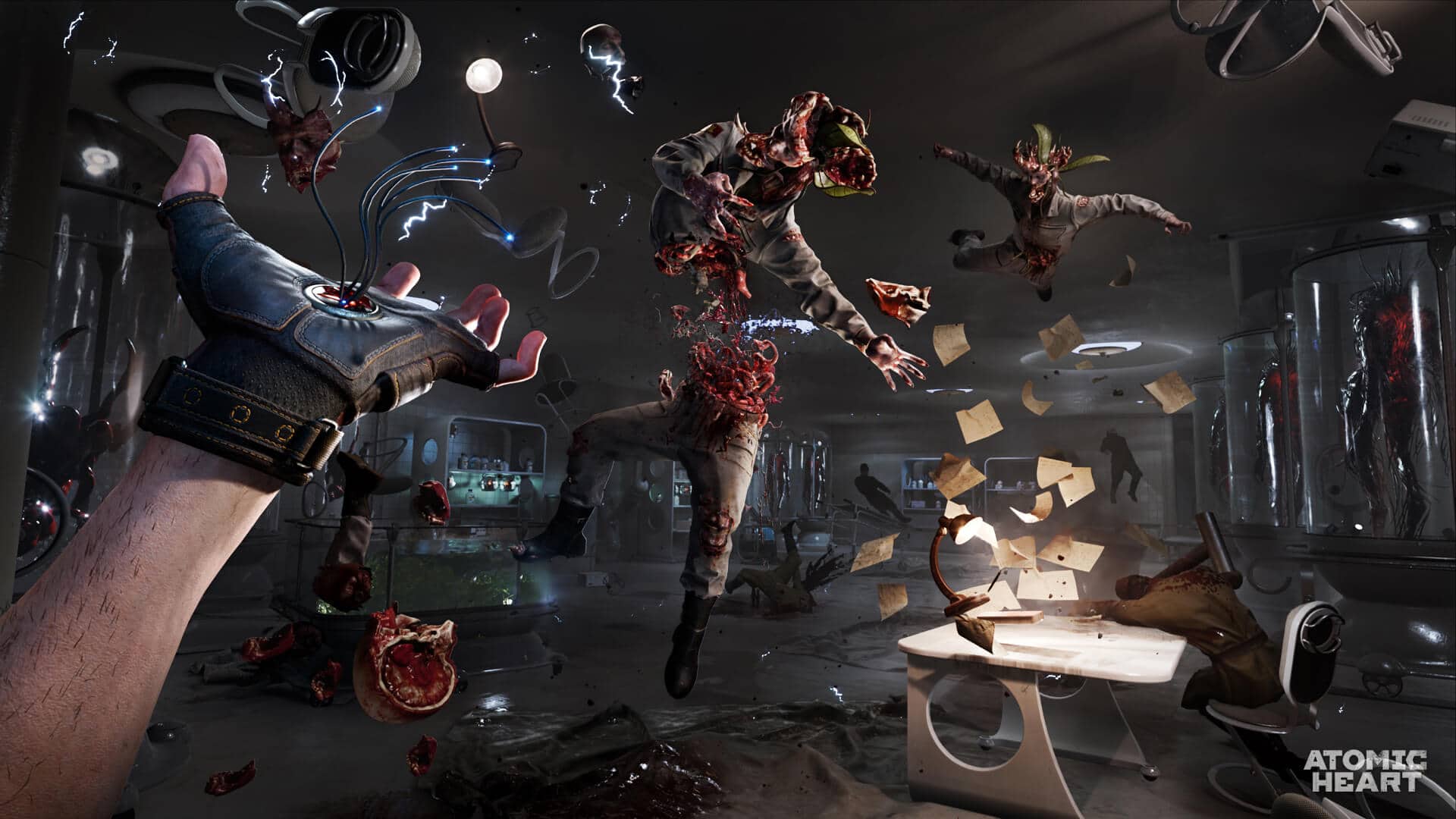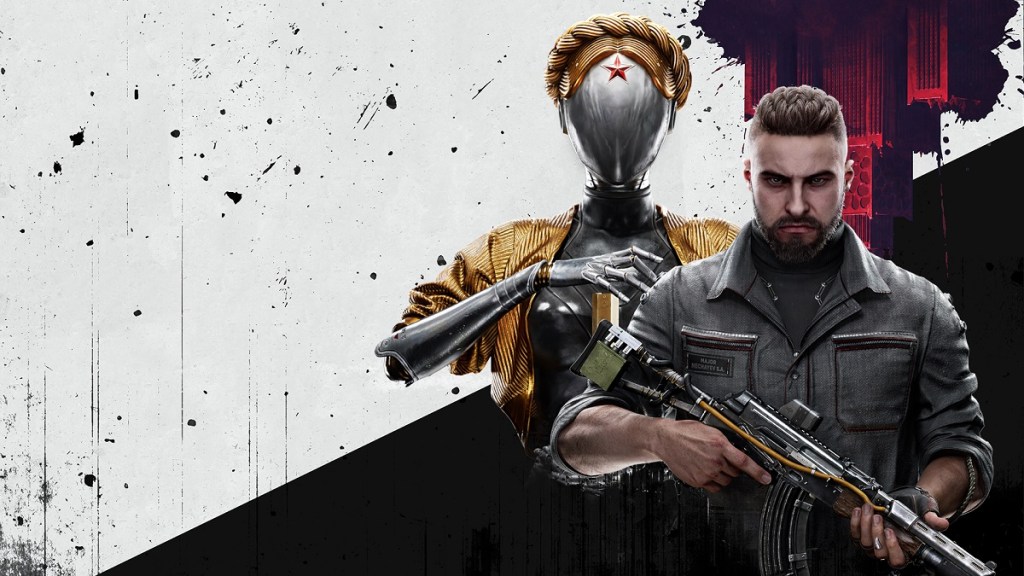Atomic Heart is advertised as developer Mundfish’s first game, but that isn’t quite true. The studio’s first venture into gaming, Soviet Lunapark VR, didn’t go too well; the Early Access game was removed from sale abruptly and support was discontinued mere months after its release. This new action RPG infused with a hefty dose of first-person shooter takes the remnants of Soviet Lunapark and expands the world, throws in a new story, and brings it to PS5 consoles for a second attempt at success. The problem is that it doesn’t quite hit the mark.
Russia is definitely not the place to be
At first glance, the alternate 1950s Soviet world seems picturesque and its citizens are in a jubilant mood with the launch of new technology being the cause for celebration. This is despite the presence of many creepy robots and a plethora of pro-Russia propaganda that celebrates the achievement of its scientists. The game has drawn plenty of criticism in recent months for the latter because of opposition to the invasion of Ukraine. Despite these complaints, the setting is fitting for the story the game portrays and it’s also worth bearing in mind this world originated in a game released four years before that war.
This peace also doesn’t last long. Major P-3 arrives at Facility 3826 to find robots going haywire and its human workforce almost completely eliminated. The outside world is dangerous and the decimated wreck of the Vavilov research station is at direct odds with the festivities at the start. This is no longer an advert for scientific advancement and more of a warning for science gone awry, but the exact point it’s trying to make gets obscured by confusing dialog that can be difficult to follow, especially if it occurs in the middle of a frantic fight.

Some of the dialogs seem to be the result of poor localization rather than actual intent. The English conversation routinely doesn’t feel natural, as if some subtleties have been lost in translation. This isn’t helped by the subtitles either racing ahead or dragging behind. Mundfish recommends players experience the game in Russian with native language subtitles, but this is difficult to do in the middle of the action.
The main characters just make matters worse. Major P-3 has his issues. He’s begrudgingly at Facility 3826 at the request of the doctor in charge, for whom P-3 feels like he has a debt to repay. With constant complaining and obvious disdain for his talking glove companion, whose only crime is to try to help, he doesn’t make for a pleasant protagonist.
Robots also have their issues. The male robots are there to work or kill you if you get too close. They don’t have a lot to say. The female robots have an altogether… different purpose. Within the first hour, there is a questionable dance performed between two robots during the opening cutscene and a vending machine that would put a callgirl out of a job. At best it’s cringeworthy. At worst it paints a completely misogynistic view that will only appeal to a certain type of audience.
At least the combat is satisfying
Vavilov is just one of several “dungeon”-like research stations across Facility 3826, with its linear layout focusing the game’s story. This is where Atomic Heart is at its best; while there are simple puzzles to solve, combat is the main focus. There’s an impressive arsenal of weapons to locate and construct using resources looted from the world around you. These can also be upgraded from blueprints scattered around the world. P-3 has augments and a glove that gives him a range of magical abilities, too. Finding the right combination of weapons and abilities for each enemy can be extremely satisfying, especially against the tougher boss characters.
Combat can be challenging even on normal difficulty, but this is made worse by the game’s inability to explain its control scheme. The instructions for what you have to do give all the information that is needed, but the game often forgets to tell you how to do it. For example, players are instructed to use stealth to get past a camera or enemies, but the methods for doing this are only vaguely displayed in a brief text box. Your abilities are also poorly described, so no small amount of trial and error is required to get the most out of enemy encounters — something that better tutorials would have rectified.

Away from the research stations, the open world is disappointingly empty. Most open-world games will fill the map with things to do, but not Atomic Heart. There are a few enemies and collectibles sporadically dotted around the area, but the only real gameplay feature to deviate from the story is the Training Grounds. Their name suggests combat arenas where players can test their mettle, but that isn’t further from the truth. Instead, they take the form of short puzzle dungeons that offer blueprints as players progress. The Training Grounds seem like a token addition padding the game out and you can’t help but feel the game would have been better getting rid of the open-world areas to focus on the much stronger linear sections.
The game autosaves at important places throughout the story, although players can also manually save their game at stations. In the facilities, manual save points are frequently distributed and death won’t result in a lot of lost progress. In the open world, it’s another situation altogether with players often having to rely solely on those autosaves.
There are 10 save slots in total, but players can’t choose which slot to use and the game will automatically overwrite the oldest save. While this seems like plenty, there was a game-breaking bug involving a locked door that would have been impassable upon return a couple of hours later, and frequent savers will long ago have overwritten the save that occurred before that bug.
There are bugs everywhere, and not the robotic kind
There are plenty of other bugs, too — the locked door wasn’t the only surface I got thrown through only to get stuck behind. Enemies would flash in and out of scenes, while some would inexplicably t-pose during combat. The alarm level indicator refused to work in some situations, as did the in-game map. The scanner also had issues, from refusing to scan enemies to not removing searched locations from its radar. Finally, there were several instances of resources and collectibles that couldn’t be picked up. The latter will make one of the game’s trophies unobtainable at the time of writing, while other trophies don’t track properly.
These are just some of the many signs that suggest the game was rushed past the finish line (including a reference to game crunch), but its problems run deeper than something that can be fixed with a couple of patches. The story isn’t explained well, the dialog is over the top, the tutorials don’t do their job, and the open world is just a boring place to be. While the combat and the linear facilities go some way to redeeming Atomic Heart, it’s not a game that I can faithfully recommend right now.
-
Combat is satisfying
-
Plenty of choice for weapon upgrades
-
Confusing storyline
-
Poor localization leads to awkward dialog
-
Tutorials don't do their job
-
Empty open world
-
Lots of bugs








